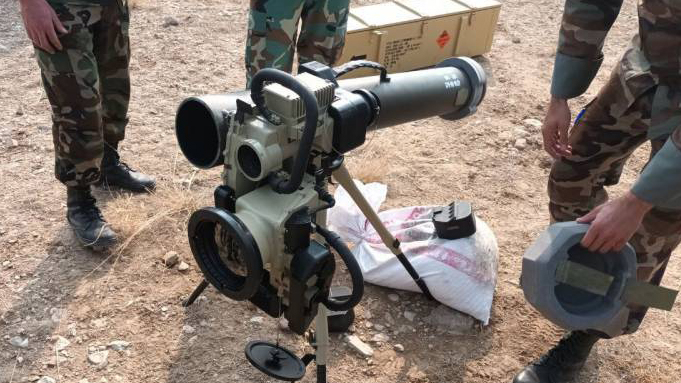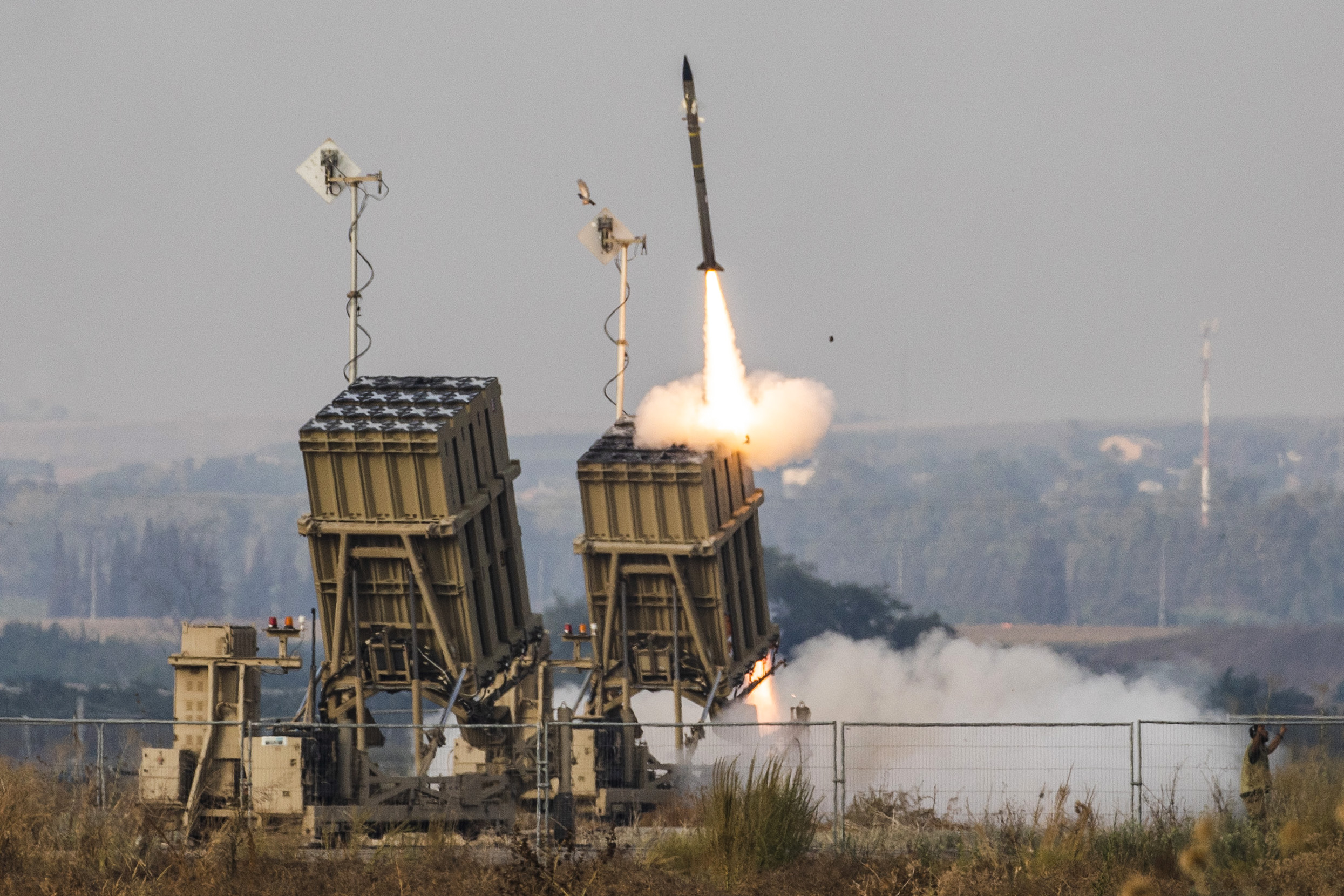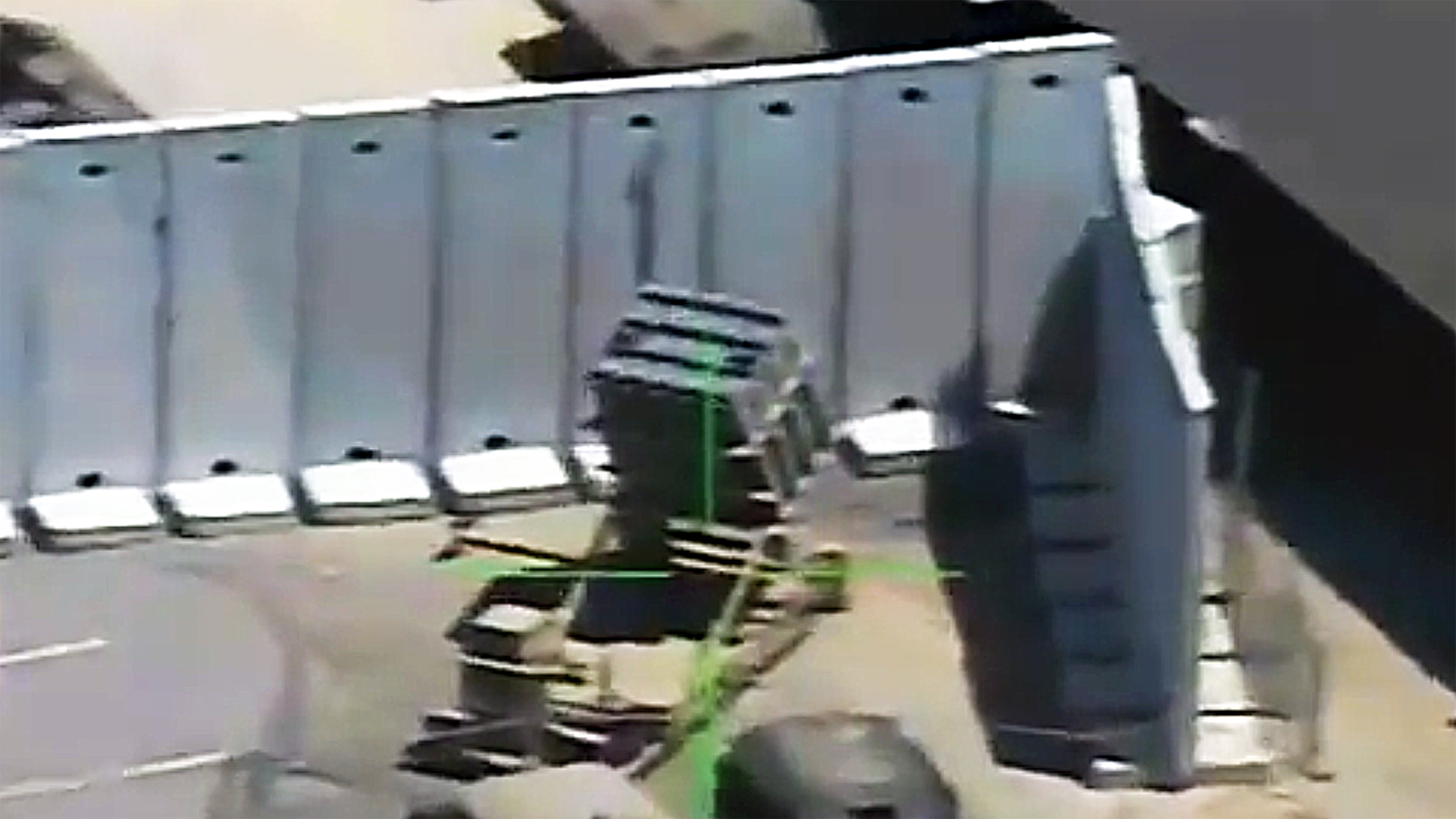A video released by the Lebanese Hezbollah group shows what at first glance appeared to be a launcher for Israel’s vaunted Iron Dome air defense system apparently being struck for the first time. The attack was on an Israeli outpost in Ramot Naftali near the Lebanese border. While the incident underlines the issues with force protection of advanced air defense sites against low-end near-threat weapons, like drones and short-range loitering munitions, there may be a catch. Screen captures from the video and subsequent release of images from the aftermath seem to indicate the launcher may have been a decoy or unused at the time of the strike.
Several components of an active Iron Dome launcher appear to be missing. While it was struck, there was no indication of secondary explosions from the Tamir interceptors that fill the canisters in an active Iron Dome launcher.
The video, taken Wednesday, shows a feed from what is very likely an Iranian-made Almas missile, a knock-off of Israel’s SPIKE anti-tank loitering weapon. It is understood to have been developed by reverse engineering SPIKE missiles that fell into Hezbollah’s hands during its war with Israel in 2006 and were subsequently funneled back to Iran for exploitation.

Almas flies out at high speed towards its target and its man-in-the-loop control allows it to make indirect attacks with extreme precision over a handful of miles. This constitutes a major threat for Israeli forces and infrastructure near the border. The first video of an Almas use by Hezbollah appeared in January, in an attack on a cliffside Israeli intelligence outpost. You can see that attack below. You can also read all about the Almas and its arrival along the Lebanese-Israeli border in this past TWZ report.
During the attack in question, as the launcher comes into view by the approaching Almas, it is seen parked behind beside blast walls. There are no other defenses seen nearby. The video then shows the munition diving undeterred toward the launcher, cutting off just prior to impact. The normal heavy wires and nearby components associated with Iron Dome batteries are not readily seen attached to the launcher.

“It appears Hezbollah did hit the Iron Dome launcher with a guided missile,” Foundation for the Defense of Democracies senior researcher Joe Truzman said on Twitter. “This is the first time I’ve observed an Iron Dome launcher being hit. Separately, Palestinian terrorist groups have been trying to do this for years, but I’ve never seen evidence they were successful.”
An image emerged Thursday on social media showing the damaged launcher, confirming it was struck. However, it seems to have offered further proof that this was a decoy or disused at the time of the strike, again showing missing components and no evidence of secondary blasts.
On Wednesday, The IDF said it “was unaware of any damage to an Iron Dome launcher,” the Times of Israel reported.
Military decoys are back in vogue with all types being widely used in Ukraine by both sides. As we previously reported, Ukraine has developed, in particular, a number of very life-like copies of air defense systems like the German-supplied IRIS-T SLM surface-to-air missile system and the U.S.-made AN/MPQ-64 Sentinel radar system. You can see an example of this in the video below.
Ukraine’s decoys are designed to help ensure the survivability of its real ground-based air defense systems, reflecting the high priority that these assets have. Decoys consume valuable Russian precision munitions and confuse opposing forces. They can also give away methods of detection and engagement, resulting in rapid counterattacks.
The U.S. military sees similar tactics as essential to surviving, let alone winning, a major fight in the Pacific and is now investing in them heavily.
Perhaps Israel set up an Iron Dome decoy so close to the Lebanese border to attract weapons like the Almas and get a better sense of how Hezbollah is employing them and from where. Still, this would have been a risky move if the compound is in use as it appears to be, even with the nearby blast walls.
It’s also very possible the launcher was indeed real, but it was being stored at the location and not active at the time of the attack or that is was used as a remote launcher for an Iron Dome system nearby. We just don’t know at this time.
Regardless, the missile still struck an outpost roughly two and a half miles from the border. This underscores how man-in-the-loop guided weapons, like loitering anti-tank missiles and FPV drones, pose a major threat to forces that simply didn’t exist a short time ago. The ‘democratization’ of precision-guided weaponry via the proliferation of these technologies mean that even high-end air defense sites need another short-range air defense (SHORAD) overlay in order to protect them from very low-end attacks launched nearby. This problem is only set to explode in magnitude, frequency, and complexity as autonomy is infused in these systems.
This is a major issue TWZ has been raising the alarm on for many years, especially after repeated alarming cases where security was clearly lacking in this regard. Whether this target area necessitated a high level of defense remains unclear, but certainly Iron Dome batteries would, considering they are top targets of Israel’s local enemies as they have neutered so much of their standoff capability.
Real Iron Dome batteries, built by a consortium of Rafael, IAI and Raytheon (now RTX), have proven incredibly effective at swatting down thousands of rockets and other projectiles. The latest configuration of the Iron Dome system also have a demonstrated ability to shoot down drones and low-flying cruise missiles.
The IDF first declared Iron Dome, which it had developed with significant assistance from the United States, operational in March 2011. In the ensuing years, the system has become a critical component of its integrated air defense system, which you can read more about here.

While the U.S. Army has two Iron Dome batteries and sent one temporarily to Guam three years ago, it is unclear what role they will ultimately play given concerns about integration with U.S. Army’s air defense architecture. As we noted last year, the Marine Corps laid out plans to acquire three batteries worth of Iron Dome systems, including 44 launchers and 1,840 Tamir interceptors. Starting just next year, as the Marine Corps looks to drastically increase its air defense forces, units will be equipped with a mixture of new medium and short-range capabilities, including Israel’s Iron Dome units that will have a particular focus on added defenses against long-range attack drones and cruise missiles.
This latest use of Almas comes as things are heating up in the north, with speculation rampant that Israel might launch a ground offensive in the coming weeks as Hezbollah has stepped up its rocket and drone attacks. You can get a sense of the massive arsenal of weapons the Lebanese jihadi group has to rain down on Israel in our deep dive here.
While Hezbollah say sit has achieved its first victory over the vaunted Iron Dome system, it remains unclear if they struck the real thing or not, but the implications of this type of attack are clear — Hezbollah can reach miles across the border to execute extremely precise and dynamic attacks and that’s a big problem.
Contact the author: howard@thewarzone.com
